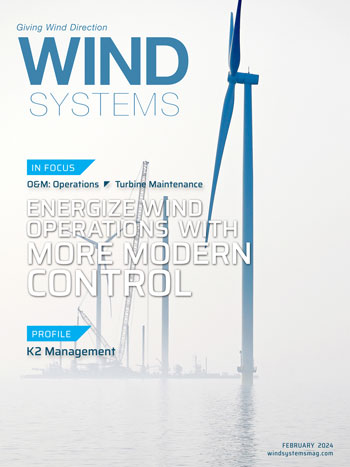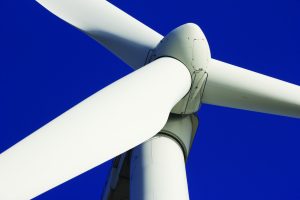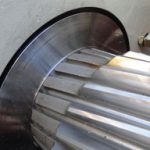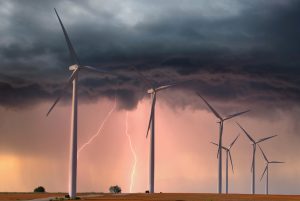As renewable energy gains more traction in the global economy, wind-farm owners and operators have new opportunities as what was once a niche market for energy production is now considered a critical building block of the global energy economy. Utilities of all sizes are acquiring wind assets and large wind farms to add to their enterprise — balancing their wind production with new solar and energy storage, as well as with existing hydro and fossil plants — to help meet net zero targets, meet demand by ensuring reliable electricity delivery, and maintain a stable grid.
As a result of this increased focus on the value of wind power, operations teams are being tasked with increasing output across their facilities, and even across entire fleets. As they attempt to increase efficiency and production; however, teams frequently run into roadblocks. In today’s environment of skilled labor shortages, many farms are operating with limited staffing. Those skeleton crews need easy and intuitive access to asset data to make the most of their equipment, while complying with ever-changing regulations and the complexity of serving evolving grid networks.
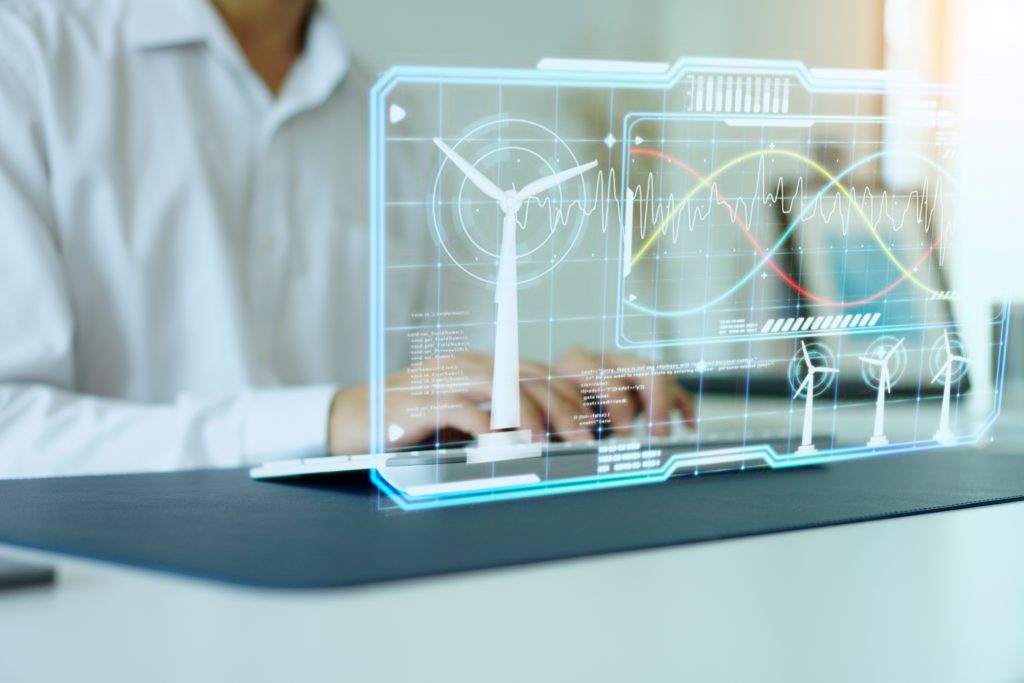
Meeting these needs is further complicated by the aging assets wind-farm operators must depend on for day-to-day operation. Many turbines still operating today are decades old, and they are subject both to the wear and tear that is standard on aging equipment, and to the limitations of assets built years ago for a different market. Those legacy assets offer little access to the critical control logic and data operators need to improve efficiency.
Today’s most successful operations teams are using a two-pronged strategy to meet these challenges — first retrofitting legacy turbine controls with modern control software and technologies — followed by implementation of green asset management platforms for improved visibility, maintenance, and control.
Why Retrofit?
Many of the wind turbines in use around the globe have been in operation for years or even decades. As with any asset that combines electronic and mechanical parts, components, including those in the control system, begin to degrade over time. Simply replacing outdated assets is often not an option. New wind turbines are costly and time consuming to construct, especially when manufacturers are experiencing supply chain shortages — a common occurrence as the technology gains popularity. And even if cost and outage times are no object, in many cases, regulatory changes limit generators’ capability to install new assets.
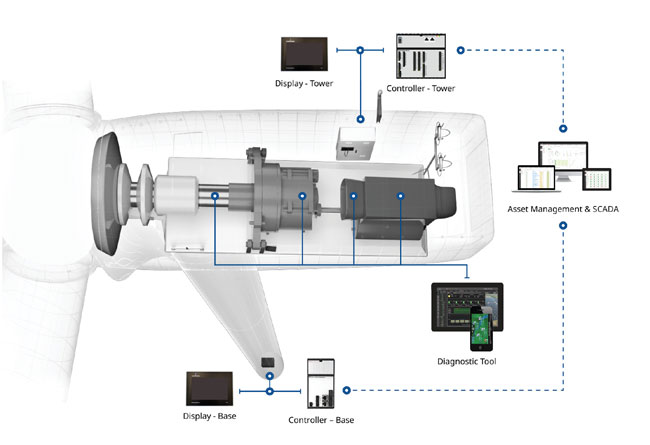
Repair is another option, but it is often more difficult than it seems. Replacement parts for legacy control systems can be complicated to specify and costly to source, if they are available at all. And even if replacement parts and service knowledge are available, many legacy control systems are incapable of handling the complex logic necessary to perform advanced control techniques and connect to modern automation platforms and smart grid systems. As a result, in some cases helping an old turbine limp along can be even more expensive than simply leaving it dormant.
Therefore, control system retrofits are often an ideal solution when repairing or replacing assets is not an option. In a retrofit project, an automation partner with a deep history of wind-generation expertise removes the old control modules from the turbine’s cabinet and replaces them with a new control system that supports modern control logic. Legacy connections are left in place and connected to the modern, plug-and-play control system using custom adapters. Typically, the retrofit can be completed in a day or two (Figure 1).
The Value of Improved Control
Updating a turbine’s control system empowers operations teams with more access to data and improved logic for more efficient, effective automation. Typical OEM turbine control systems do not offer much access to turbine operational data. They are black boxes, where the data is only available to the manufacturer. If teams want additional data beyond what is provided through the control interface, they need to go through their OEM every time they want access.
Without data, operations teams struggle to implement effective operational changes. They are dependent on the OEM — and often, an increasingly expensive service contract — to optimize and improve service and maintenance. Retrofitting new control systems into legacy turbines gives the operations team full ownership of their data and full access to control of the turbine so they can make the operational changes necessary to drive improved performance.
Essential Protection
One critical way in which improved control helps drive safer, more efficient, and more effective operations is in expanded automation to protect the turbine against loads. While modern turbine installations typically happen only after extensive site assessments to ensure the right turbines are used in the right locations, a decade or more ago, such extensive assessments were less common. As a result, many organizations have turbines that are mismatched with the local environmental factors, such as low wind turbines on high wind sites, or turbines not designed for turbulence installed in high-turbulence areas.
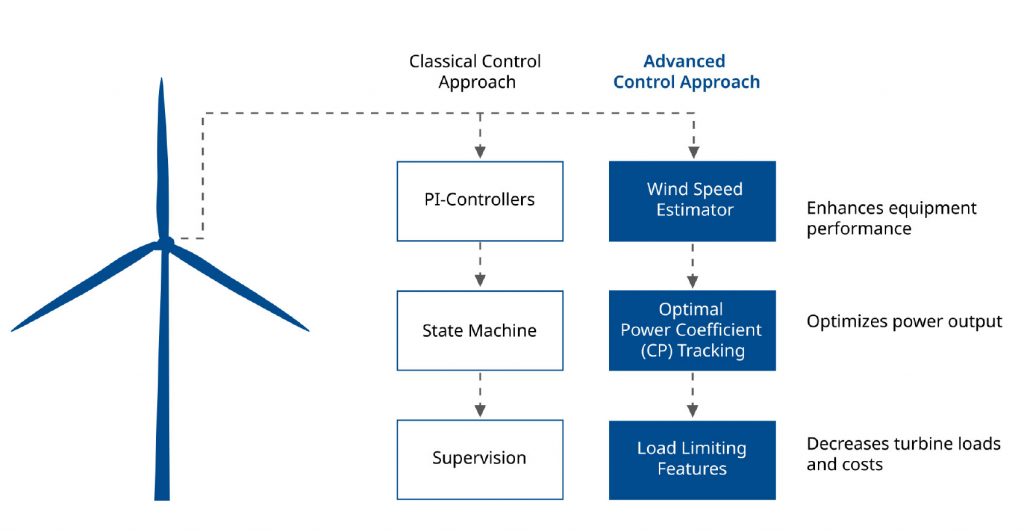
The best modern turbine control systems can mitigate the effects of these site mismatches. Instead of the turbines always going into overspeed, new control systems empower operations teams to configure protective features, built into the control logic, to offset the effects of turbulence and high wind.
Moreover, the same advanced control logic can be applied to more common concerns, such as yaw and pitch misalignment. Today’s advanced technologies can use control logic to automatically adjust alignment and pitch to reduce loading and oscillation.
The most advanced logic can even use load, turbine speed, and wind speed to predict how strong wind effects will be in the future, and then put limits on rotor speed to protect the turbine (Figure 2).
These small changes can have a significant impact. An 8-degree misalignment can mean a 2-percent decrease in annual production. Considering that 4 to 10 degrees of misalignment is common in a turbine, that production decrease adds up to significant lost revenue across a farm.
Improved Performance
Modern turbine control systems also empower teams to improve their annual production by implementing more advanced control strategies than those built into OEM systems.
For example, a team with a newly retrofitted 1-MW turbine can uprate the power, enabling them to operate that turbine at 1.1 MW, adding 100 kW of production. Over time, that increase can significantly boost overall production and bring in dramatic revenue increases that quickly offset the cost of the retrofit. Alternatively, a team could choose to implement a new control strategy to boost power, moving from sub-rated to rated power to get more out of existing equipment.
Partnering for Success
Ultimately, the benefit of control system retrofits on wind turbines comes from optimizing load and output. Teams will find that, after a retrofit, they have access to far more options than ever before, and they will need to choose the right strategy to drive the best ROI from their update. Knowing how to pick the best strategy can be critical to success.
For example, a generator selling power at a very high revenue per kilowatt-hour might not be worried about reducing life on a turbine, and, as a result, might run a strategy that increases load, while maximizing production to bring in revenue as quickly as possible. But these producers are typically the minority. Most teams are looking for a good balance between load and production, and they may even need to design ways to change strategies as rates change to meet those goals. The team’s automation provider can be a great resource to tap to find an optimal operating strategy — but only if they have extensive experience in power generation. A solution provider with deep power industry and wind-generation expertise can examine the organization’s historical data and create estimates of equipment production and lifetime based on current strategy, and they can then make recommendations for better strategies for best ROI and long-term production.
A Single Pane of Glass
Another benefit of partnering with an experienced automation provider is they will have additional tools to manage an organization’s assets at every level — from a single turbine to a farm, to a fleet, to a multi-site enterprise with other energy sources mixed in. The most experienced providers offer portfolios of purpose-built renewables software and automation solutions to reduce complexity through easier management of assets across the enterprise.
Using these green-energy solutions, producers can look at their complete portfolio of power-generating assets — regardless of control system — and see how they can most cost-effectively operate, maintain, and control a wide variety of assets from a single pane of glass (Figure 3). Operators no longer need to log into and navigate a wide variety of disparate OEM control systems. Instead, they control everything in the organization through a single supervisory control and data acquisition (SCADA) interface.
Experienced automation providers also offer wind-farm control solutions that operate on top of OEM or retrofitted control systems. Using a farm control system, an operations team can control all its wind turbines as a single power-producing asset. In such a configuration, they can change setpoints, reserves, and more with a single communication to the grid. Wind-farm control solutions can even incorporate other energy solutions, like solar or battery storage, to help the team control all its energy sources at once.
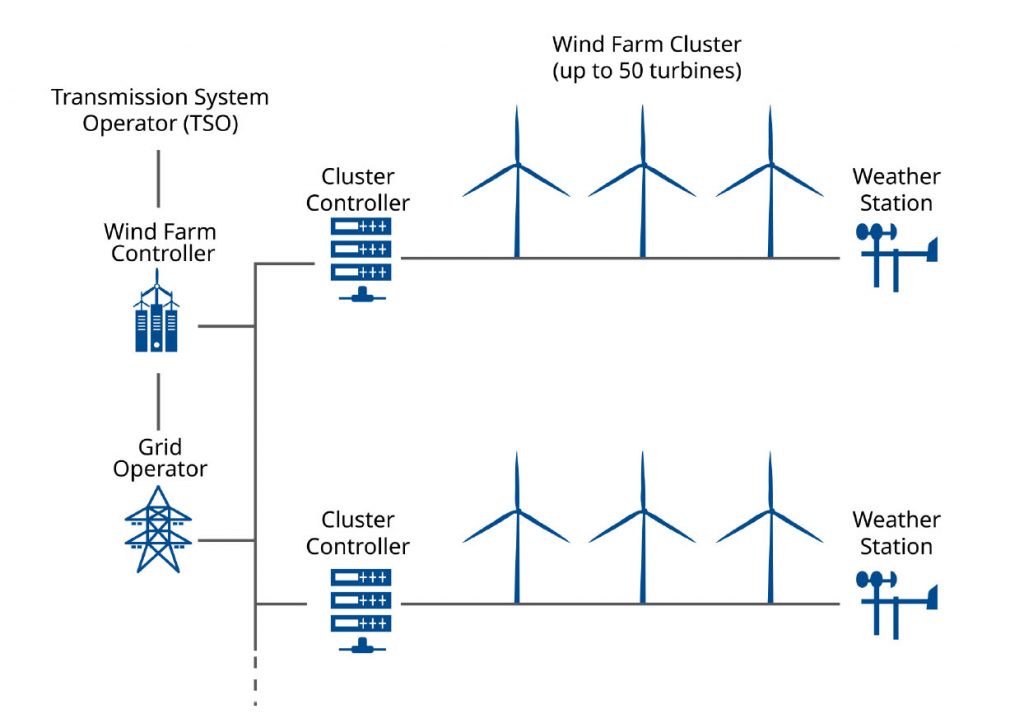
Today’s most successful organizations are choosing providers whose green-energy solutions, farm or fleet-wide control systems, SCADA and more — seamlessly integrate. With integrated solutions, teams spend less time configuring a complex web of connectivity among systems, and more time managing and operating control for better performance across the energy value chain.
A Changing Paradigm
The benefits of an integrated green-operations platform with better control functionality are changing the way wind power generators approach future projects. Instead of the 10-20-year service agreements that used to be the standard on new turbine installations, today’s providers are often pushing OEMs for 5-7-year contracts, knowing that with a control retrofit and enhanced technologies across their enterprise, they can gain control over their assets much faster to drive improved performance.
Those same teams are also planning the ways they will incorporate their new assets into their green-energy management ecosystems from the earliest stages. They are seeking out green asset management platforms that will support all new assets they bring online, and they often want to bring those assets into the system in the first days of operation to set baselines, and to track and trend performance more effectively across the lifecycle of their equipment.
Data is the Key
Good data is essential to safe, efficient, and effective operations. Today’s wind-power operators have more options than ever to ensure they have access to that data, whether they are doing so on legacy turbines or new installations. By planning ahead and working closely with an automation partner who understands the power and wind-generation industry, those teams can secure rapid ROI in parallel with improving their operations to help justify future projects. As the green-energy economy continues to expand, the organizations who embrace these strategies earliest will secure competitive advantage and long-term reliability across their farms, fleets, and enterprise.
















